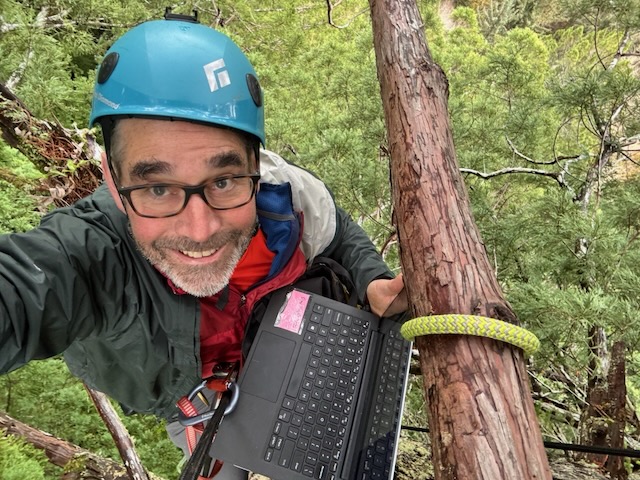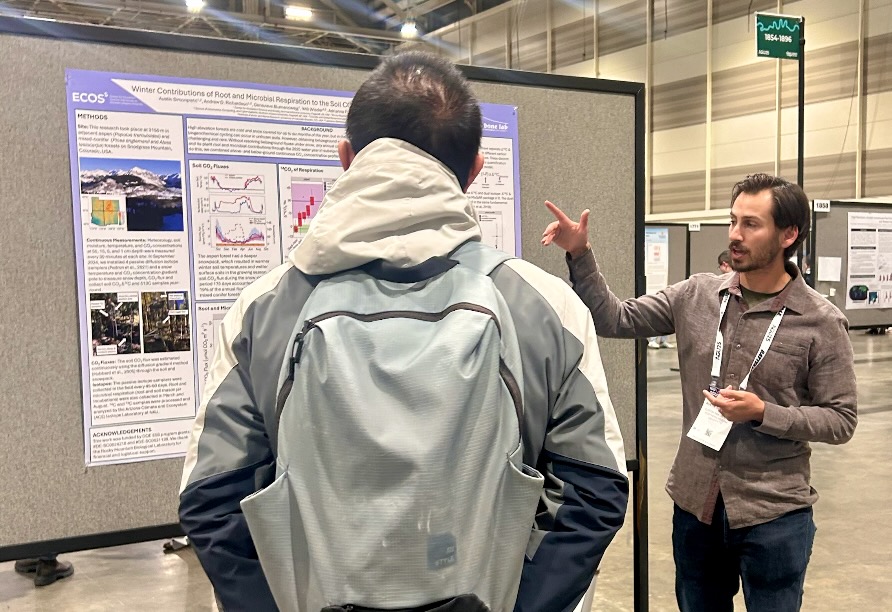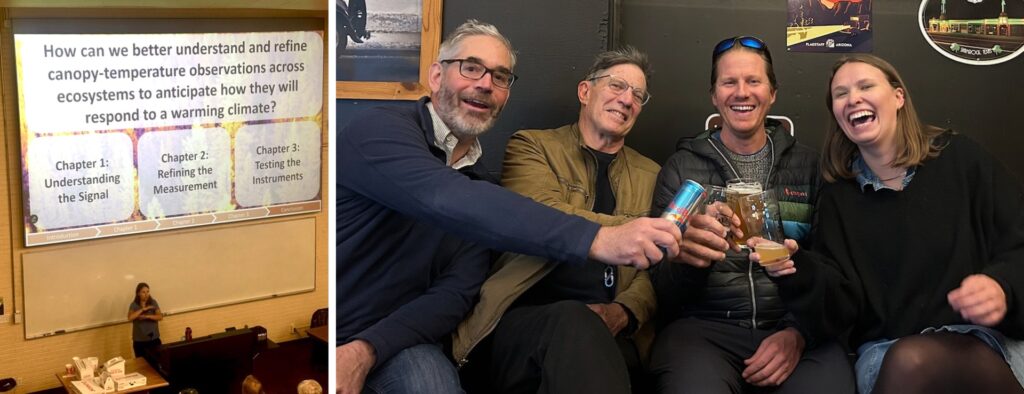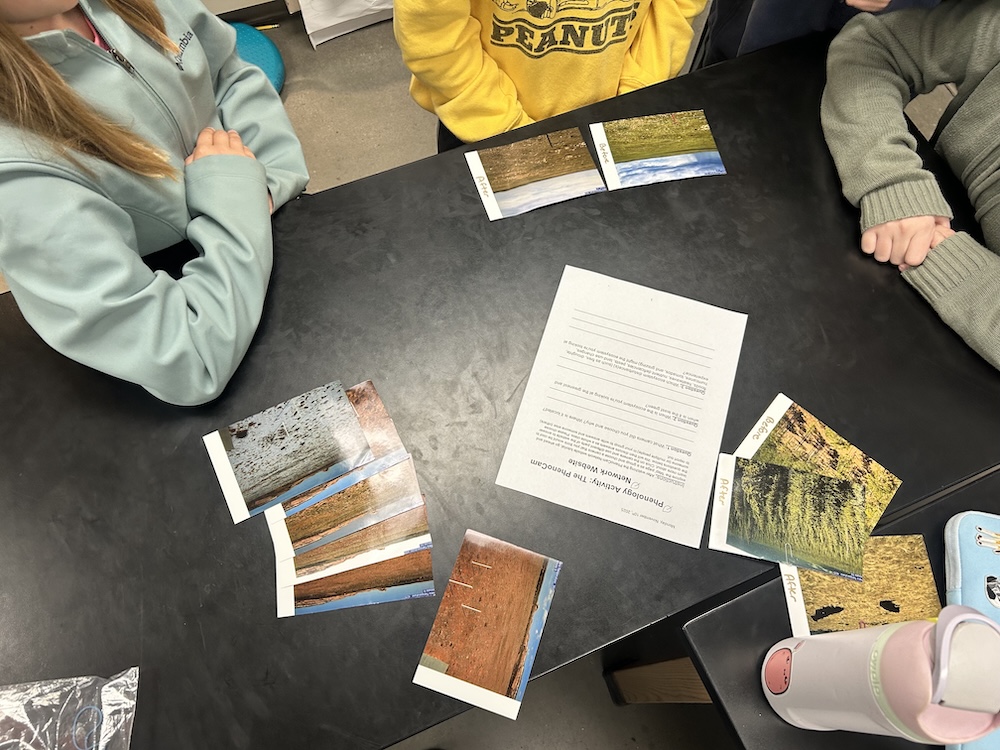In the last week of the holiday break, Andrew and George Koch made a trip to visit their field sites in Northern California. Flying into Medford, OR, they then drove to Klamath, CA, where they visited Tree 51 in Redwood Experimental Forest. From there it was on to Save the Redwood League’s (SRL) Harold Richardson Preserve in coastal Sonoma County. After two days spent there (and two nights at Sea Ranch) they drove on to Big Basin Redwoods State Park, just north of Santa Cruz, before flying home out of San Jose.
The purpose of the trip was to conduct site maintenance and download data from Tomst point dendrometers, which had been installed along a vertical profile on one tree at each site. At Harold Richardson, a solar panel had to be re-mounted and some old equipment removed; at Big Basin, a new phenocam had to be installed.
Despite a dismal forecast (a series of atmospheric rivers had drenched the region during the preceding 2 weeks), the hardy arbornauts remained relatively warm and dry the entire trip.
It was a pleasure to meet up with former postdoc Drew Peltier and his student Declan (at Harold Richardson and Big Basin), as well as UC Davis PhD student Lily Klinek and SRL Senior Scientist Laura Lalemand (at Harold Richardson).
The photos show Andrew somewhere in Tree 51, and George playing Tetris with a dozen dendrometers.














